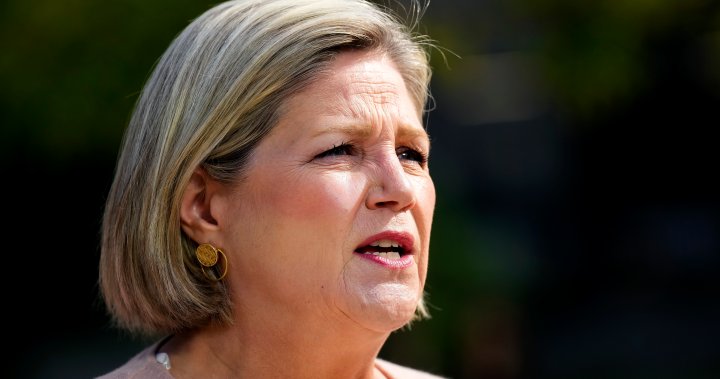The mayor of Hamilton, Ont., said that the people in her city are pretty anxious about potential effects of the recent tariff on steel and aluminum announced by U.S. President Donald Trump.
“Folks are pretty worried,” Andrea Horwath said during an appearance on Global News Morning.
On Monday, Trump imposed a 25 per cent tariff on all steel and aluminum imports into the U.S., including those from Canada, which are set to take effect in March.
In addition, the American president has also announced a 25 per cent tariff on all Canadian products and on Tuesday a U.S. official said that would be paired with the steel and aluminum tariff.
“The big picture here is that we export about half of our production into the U.S. So, you know, we’ll see imposition of tariffs,” Western University business professor Fraser Johnson told Global News.
“I think Canada is going to be disproportionately affected by what happens because 23 per cent of U.S. steel imports come from Canada.”
Horwath estimates there are somewhere around 20,000 to 25,000 people who are employed in the industry in Hamilton.
“So we have a lot of folks that rely on those jobs, a lot of families who are fed by those jobs,” the mayor said.
McMaster University’s Colin Mang also noted that there are knock-on effects to the local economy when there are job cuts in the steel industry.

Get breaking National news
For news impacting Canada and around the world, sign up for breaking news alerts delivered directly to you when they happen.
“There is an indirect economic benefit because all these workers also shop at local shops and in local restaurants,” the economist noted. “The wages from the steel industry support a broader economy of up to 100,000 jobs.”
Horwath said that depending on the length the tariffs are in place, it could Hamilton stands to see about a billion dollars disappear from the local economy.
“And that’s something you can’t just absorb that. It’s going to be quite serious,” she said.
While Hamilton could feel the pinch, it has a more diversified economy than some other areas of Canada such as Sault Ste. Marie, Ont. and Selkirk, Man.
“Some of these other towns that host steel mills that are sort of their single big enterprise are going to be really hard hit,” Mang said. “Selkirk in Manitoba, for example, they send 70 per cent of the steel that they make to the United States.
“And if they lose access to that market, well, their steel mill isn’t really economically viable.”
Horwath noted that there is not much of a response that municipal governments can provide in the situations. She is looking for the federal government to announce their plans.
“I’m certainly hopeful that we have a strong, clear response that says we are not going to just take this,” Horwath said.
This is not the first time Trump has gone down this path, having levied tariffs on Canadian imports in 2018 and also in 2020.
The first round of tariffs remained in effect for a year and resulted in some job losses for steel industry in Hamilton.
“There were a lot of layoffs,” Horwath said. “Companies were able to eventually get back up on their feet but it took several years.”
Wang noted that when Trump levied tariffs in the past, Canada has responded with tariffs against Republican states and that is probably what will happen again.
“So, for example, going after Florida orange juice there, they’re going to want to pick specific products and specific industries where they can cost American businesses revenue,” the McMaster assistant professor explained.
“And therefore, those businesses are going to go to their Republican representatives and say enough is enough. We don’t want to have a trade war with Canada.”
Either way, Trump’s tariffs are expected to lead to higher prices for consumers on both sides of the border, including his own constituents.
“You can’t snap your fingers and increase your steel manufacturing capacity by 25 or 30 per cent,” Johnson explained.
“So I think what’s going to end up happening is that American manufacturers are going to have to pay higher prices for steel. That’s going to drive up prices for consumers.”
He used the auto industry as an example as it is one of the biggest consumers of steel in North America.
“Some of the estimates I’ve seen is that the steel tariffs could add $1,000 to the price of a domestically-produced automobile,” Johnson said.
Along similar lines, Wang noted that Trump’s tariffs will really hit the pocketbook of the average American.
“Some of the estimates on when he first announced the 25 per cent (tariff) broadly across Canadian goods was that it would drive up the cost for American families by between $1,100 and $1,500 a year,” he said.
“That’s a lot more money that families would need to spend on things like grocery bills.”

